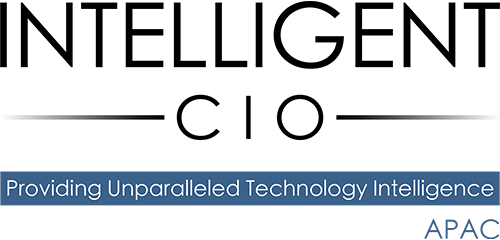Strong cybersecurity is the backbone of every organisation. Check Point Software agrees, outlining the three C’s methodology below and why should they be central to an organisation’s strategy moving forward.
Cybercriminals are constantly finding new ways to exploit governments, major corporations and SMEs. Motivated by many different factors, such as political, financial or social gain, criminal groups are taking advantage of both the rising geopolitical tensions and the volatile economic climate. That was evident in 2022, when global cyberattacks rose by 38% compared to the previous year according to our Check Point Research report – and there is no sign of activity slowing down in 2023.
The threat of multiple attack vectors looms large and hackers are shifting their focus from individuals to organisations as they attempt to cause maximum disruption. With such a complex threat landscape, ensuring your organisation has the best security measures in place should be a priority. But what does that look like? At Check Point, we believe in a prevention-first strategy built on a foundation of the three Cs: Comprehensive, consolidated and collaborative.
Adopting a prevention-first approach
Less mature cybersecurity vendors often claim that cyberattacks will happen no matter how robust your security is. The best you can do is detect the attack once it has already breached the network and respond as quickly as possible. However, there is another way.
Check Point Software’s market vision and brand promise – you deserve the best security – ensures every organisation can conduct their business over the Internet with the highest levels of security. To deliver on this promise, we focus on our ‘prevention-first’ market approach by leveraging the power of ThreatCloud data and Artificial Intelligence.
ThreatCloud is powered by 30 years’ worth of data. When combined with Big Data threat intelligence and advanced AI technologies to provide accurate prevention, our technology can prevent advanced threats across your entire network, endpoints, cloud environment, email and IoT devices before they even happen. For example, ThreatCloud prevented 2.5 billion attacks in 2022.
In Miercom’s 2023 Next Generation Firewall (NGFW) Security Benchmark report, Check Point’s Quantum Cyber Security platform achieved a near-perfect score, with a 99.7% malware block rate and a 99.9% phishing prevention rate. In comparison, the average malware block rate for tested competitors was just 54.1%, and in phishing prevention tests, some tested competitors’ miss rates were 10 times higher than that of Check Point – a weakness no organisation can afford in today’s high cyberattack range.
Furthermore, at a time when security teams are already under intense pressure, the last thing they want to deal with is false positive malware detection. In a 2021 report, it was suggested that 46% of web-application cybersecurity alerts were false positives. The report also found that these false positives took the same amount of time to remediate as real threats. Implementing Check Point’s suite of enterprise solutions will ensure false positives are reduced and security teams can focus on the issues that matter.
Critically, adopting a prevention-first approach could also reduce inflated cyberinsurance premiums. As attacks become more sophisticated and increase in frequency, scrutiny of organisations’ defences has intensified. Up until recently, cyberinsurance was reasonably priced and easy to obtain. However, between 2019 and 2021, the global cost of premiums soared from US$3.3 billion to US$6.5 billion. Ensuring your cybersecurity defences are fit for purpose has never been more important.
Rupal Hollenbeck, President, Check Point Software Technologies, said: “The need for cyber-resilience has never been greater. We are reaffirming how a prevention-first model fits within an organisation’s wider business strategy through the three Cs of the best security. These fundamentals are designed to focus the mind on what is important when building a cybersecurity strategy, ensuring that the choices you make deliver the results you deserve.”
The three Cs of cybersecurity
Our prevention-first approach is brought to life through our three Cs of best security, but what are they and why should they be central to your organisation’s cybersecurity strategy moving forward?
- Comprehensive – The complexity of attack vectors is constantly evolving. Ensuring your organisation is protected across everything should be the priority. If one vector remains open, it could lead to a serious breach of critical infrastructure. A comprehensive solution that covers all vectors is imperative to prevent an incident from occurring in the first place.
- Consolidated – The latest generation of sophisticated cyberattacks spread quickly across all vectors and frequently bypass conventional defences. To combat these attacks, businesses deploy multiple-point solutions, many of which duplicate efforts and create siloed lines of communication. A study conducted by Dimensional Research and Check Point found that 49% of all organisations use between six and 40-point security products, while 98% of organisations manage their security products with multiple consoles, creating visibility blind spots. There has been a shift in focus in recent years, with a Gartner study reporting that 75% of organisations were pursuing security vendor consolidation in 2022, up from 29% in 2020. Over half (65%) of those surveyed said this was to improve their overall risk posture. By embracing a consolidated architecture that enhances security coordination and effectiveness, organisations improve security and save budget by reducing operational overhead to integrate multiple, siloed solutions.
- Collaborative – Implementing a strategy with collaboration at its core could be the difference between success and failure. When an attack hits an endpoint, for example, all other security technologies across the cloud, network and email must act and respond accordingly to prevent the attack from entering through their respective vendor. To achieve that, the consolidated and comprehensive architecture must make sure every security engine is applied to any attack vector. On top of that, real-time threat intelligence information gathered from all enforcement points, research teams and third-party feeds, must be shared across the environment so action can be taken immediately to prevent the attack. Our API-based solutions can be integrated with third-party systems to deliver the most accurate real-time data.
“Check Point was founded 30 years ago on the basis that prevention is better than remediation when it comes to cybersecurity,” said Itai Greenberg, Chief Security Officer, Check Point Software Technologies. “That vision has never been more important than in today’s digital landscape as organisations face sophisticated fifth-generation cyberattacks from every threat vector and need to adopt a prevention-first approach to today’s security posture.”
Click below to share this article

